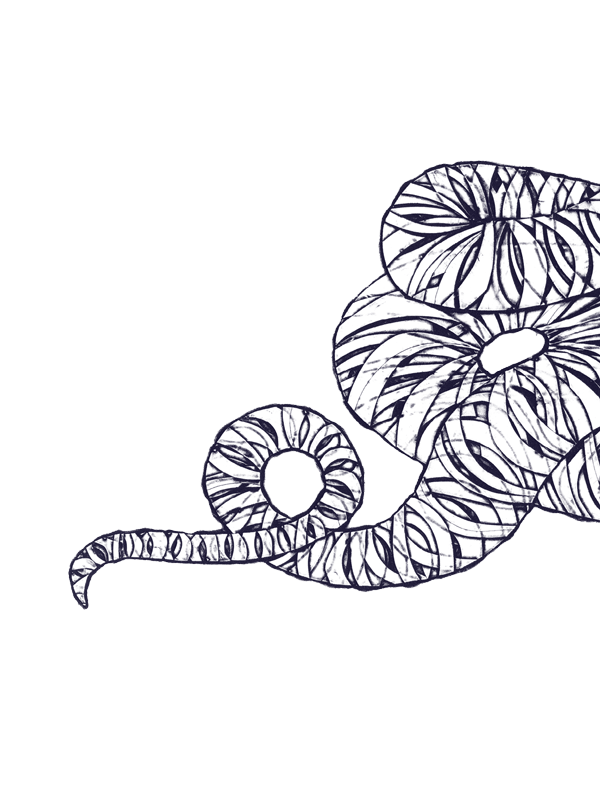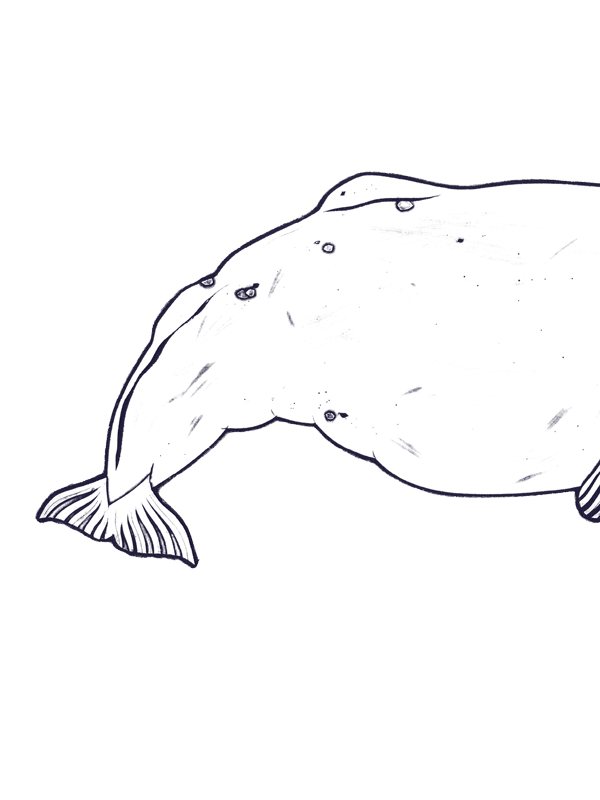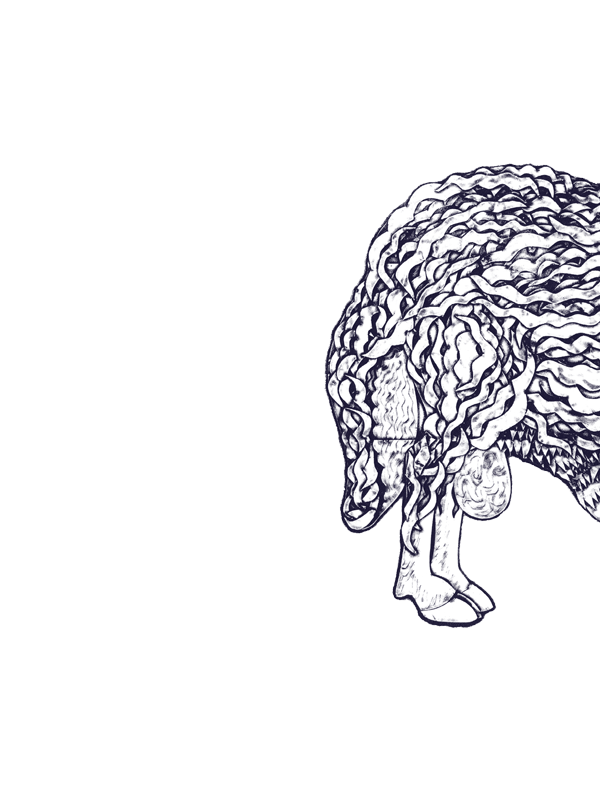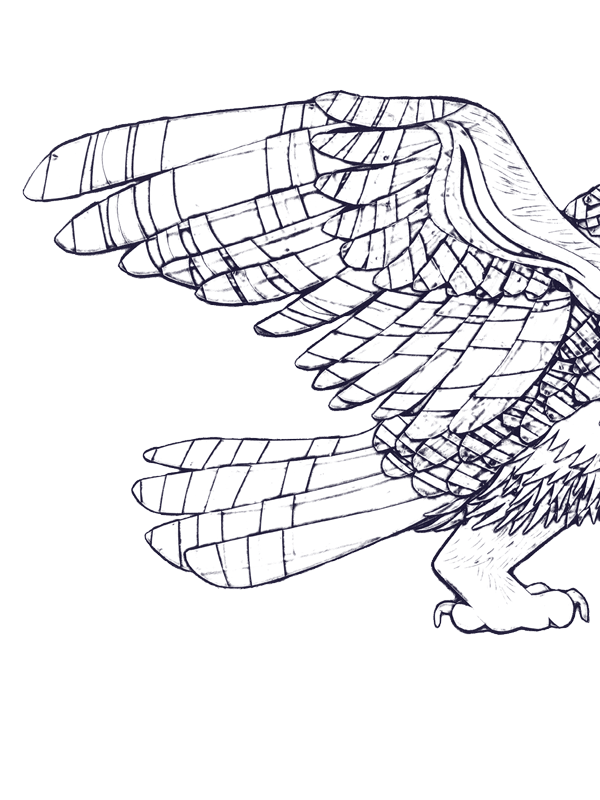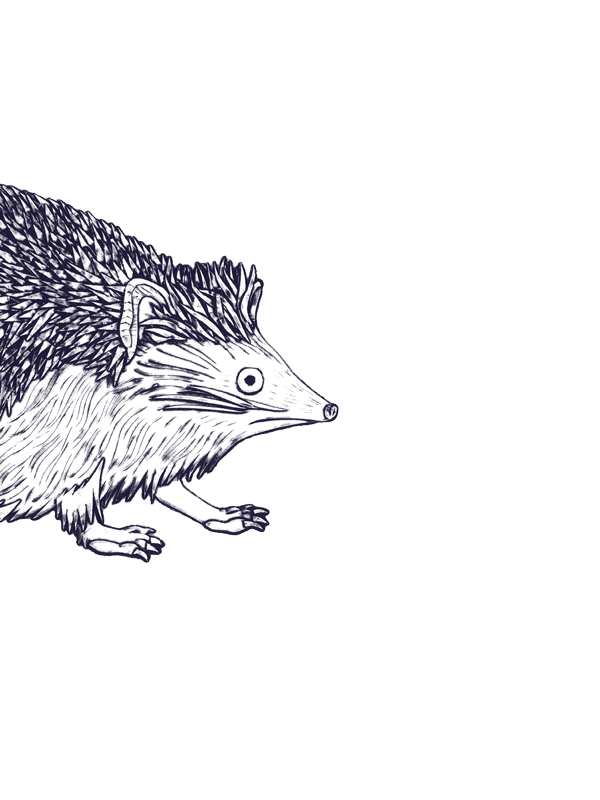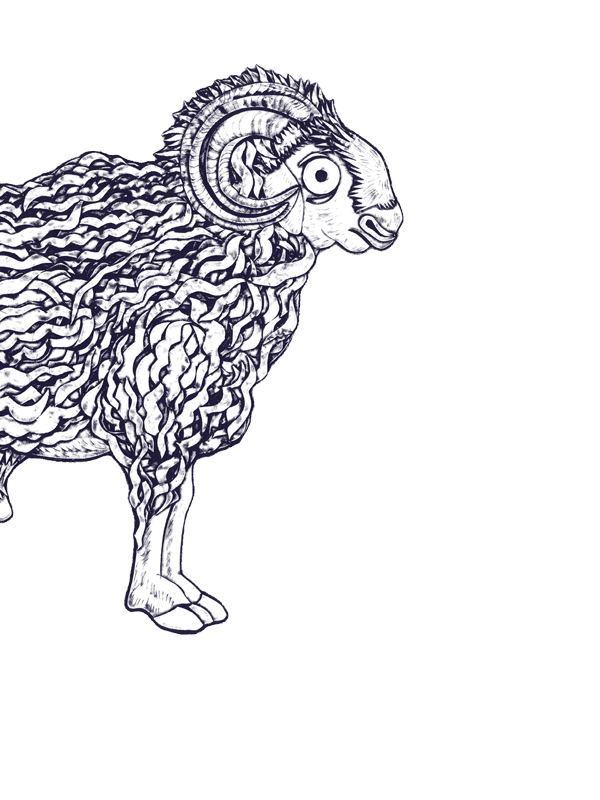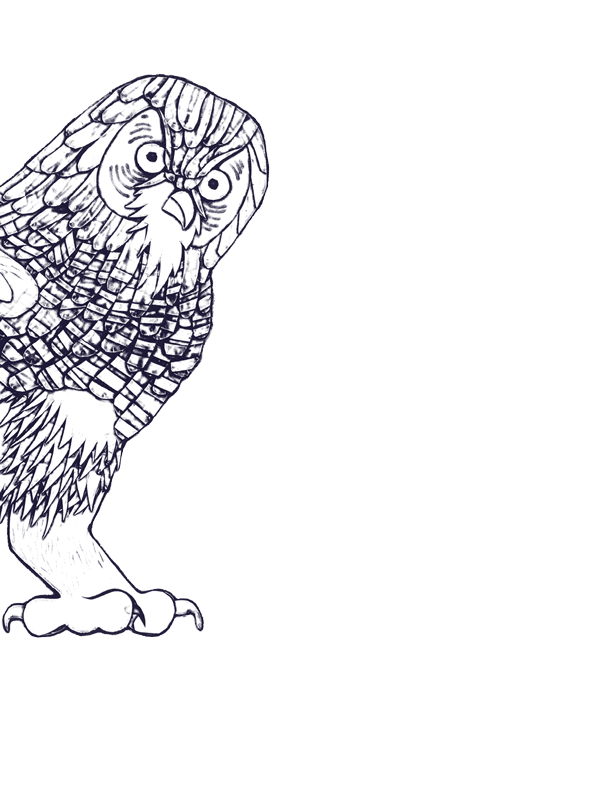(If nothing appears, please check that you allowed the usage of pop-up on this webpage.)
Please enable it to get the full experience.
A typeface family designed
by Alice Savoie
A series of original illustrations
by Marine Rivoal
A commission
by the
Centre National des Arts Plastiques
In partnership
with the
Groupe Imprimerie Nationale
For this new commission of a typeface family by the Centre National des Arts Plastiques, we wished to associate the skills and domains of activity of our two institutions with the aim of accompanying a new creation.
The Centre National des Arts Plastiques supports and valorizes graphic design and typography, through its collection, its publications and the events that it hosts. The Imprimerie Nationale is endowed with an exceptional patrimony. The know-how that it fosters and puts into practice is soundly based in History while firmly looking towards the future.
We wanted to bring these complementary values and energies together in order to implement this project, for which Alice Savoie has been selected by a panel of experts that was assembled for the occasion. Her approach combines patrimony and current events, rigor and poetry and all of this with intelligence and creativity. Faune, the typeface has been designed and developed in unexpected and subtle forms, and calls upon the most contemporary of digital technologies.
Typeface design is a dynamic and inventive domain and Alice Savoie’s proposition is a brilliant example of this. Let us hope that Faune participates in bringing the work of typeface designers to light and confirming their importance in the construction of everyday life.
Faune, together with its design sketches and documents, is part of the collection of the Centre National des Arts Plastiques. Our two establishments, together, have in this way contributed to writing a new page in the great book of typography.
Yves Robert
Director of the Centre National des Arts Plastiques
Didier Trutt
Chief Executive Officer of the Groupe Imprimerie Nationale
"It is not the same world that emerges along the line that writes the verb ‘to look’, depending on whether the line passes via the lynx, the hawk, the ox, the bat, the antelope, the snake or the man, indeed as it is not quite the same from one man to another."
Thin Black
To study the plurality of the animal world for the purposes of creating a new type family: this is the surprising ambition of Faune that you can discover on this website.
Though natural history has had a strong influence on literature, poetry and painting, its impact on typography is still quite limited. Admittedly, the floral side of Art nouveau prompted a number of typefaces and ornaments such as those designed at the start of the twentieth century by Eugène Grasset and George Auriol for the G. Peignot & fils foundry; but why has the diversity of animal species, teeming with morphologies, behaviours and rhythms, not been explored before now?
Faune’s reason for being is to attempt to fulfil this mission of proposing another manner of designing and combining typefaces, based on an encyclopedic visual knowledge that is transmitted by book history.
At the origin of this second typographic commission, initiated by the Centre National des Arts Plastiques, this time in partnership with the Imprimerie Nationale, is a question: what would a contemporary and forward looking vision of the type family look like?
For over five centuries, the typographic palette available to us has been constantly expanding: blackletter and roman typefaces, then italic and bold variants, with or without serifs, multi-scripts, for continuous reading or titling… This variety demonstrates our ability to ceaselessly reinvent our relationship with letterforms, and with the text. More than a testament to creativity, this phenomenon also reveals an increasing desire for rationalization: type designers have made numerous attempts to name and classify this aesthetic diversity, and to have some control over the possible combinations that can be made between different type styles; they have also repeatedly criticized the hybridizations to which typefaces have been subjected.
The paradigm shift that is currently occurring, fostered by (among other factors) the diversification of mediums that enable us to read and write, has forced type designers to come up with a typographic palette that is adapted to this diverse and constantly changing environment. The most frequent response that is provided today is the development of vast homogeneous sets of typefaces, with multiple gradations of weights, of widths, of optical sizes, etc., that users are invited to draw from to meet their needs.
Going against this process of expansion, Faune wishes to challenge this evolution by proposing an approach that is invested with formal diversity and unexpected crossovers.
This new typeface commission is also a rare opportunity to collaborate with the Imprimerie Nationale and the Atelier du Livre d’Art et de l’Estampe, and to rediscover its long established patrimonial collections. The Cabinet des Poinçons stands out as a top tier collection, but it is also worth noting the impressive collection of books published by this establishment (that would successively be called Imprimerie Royale, Imperiale and then Nationale) since its foundation in 1640 on the initiative of Cardinal de Richelieu.
Faune has its source in two scientific masterworks. The first, Histoire naturelle, by Georges-Louis Leclerc, Comte de Buffon, was published between 1749 and 1788 by the Imprimerie Royale. Buffon was one of the forerunners of comparative anatomy, being among the first to establish a link between different physiologically similar species, organizing them into families with a biological unity. He is thus credited with having foreseen a number of modern ideas on the variability of species and “evolutionism”.
This impressive body of work compiled by Buffon and his collaborators, divided into four series, spread out over 36 volumes and richly illustrated, represents a crucial step in the constitution of natural history as a major science in France. The associated engravings give a finely detailed account of the morphological variations that exist between species. They have also contributed to making it a timeless work of reference, one that continues to fascinate despite the fact that the texts that they accompany have long since been surpassed.
The second is the monumental Description de l'Égypte ou Recueil des observations et des recherches qui ont été faites en Égypte pendant l'expédition de l'armée française. It was published by the Imprimerie Impériale (later Royale) between 1809 and 1830 and constitutes the first scientific description of ancient and modern Egypt, spread out over 9 volumes of text and 14 volumes of plates. It signals a major event in French publishing, one of the most ambitious endeavours ever undertaken by the Imprimerie Nationale. Even though it is not strictly speaking a history, like that of Buffon, the Description de l’Égypte belongs nonetheless to a humanist tradition that continued to be renewed and amplified during the Enlightenment. It was in particular its magnificent natural history plates and prints that motivated the creation of Faune.
Symptomatic of a growing need to analyse, name and classify nature’s wealth so as to better understand it (and, at the end of the day, to conquer it), these two books are exemplary as much for the quality of their typographic composition and of their printing, as for what they reveal of the cultivated elite’s interest for nature. This was particularly pronounced in France between 1730 and 1860, a period during which natural history became the fashionable science of the day (as were astronomy, physics or even geometry before it): from the fixist theories of Georges Cuvier to the evolutionist ideas of Jean-Baptiste de Lamarck and Étienne Geoffroy Saint-Hilaire, lively and passionate debates took place and permitted the establishment, and then consolidation of the basis for the many disciplines essential to our understanding of the living such as zoology, botany, geology and even ethnology.
Echoing the splendid iconographic plates and prints that accompany these two works, Faune draws upon the wealth and vivacity of animal forms that appear within them in order to question the notion of lineage between different typefaces, and propose a new typographic ecosystem.
Although the engravings associated with Buffon and with the Description de l’Égypte at first appear to be quite removed from any typographic concerns, one can find among them eloquent examples of mutation, of variation, of lineage between species. Look at these plates that compare the skeleton and fur of rats, or even this “table of the order of dogs” by Buffon; note the variations in width, thickness and length between different specimens of lizards, of chameleons, of bats in the plates of the Description de l’Égypte. Each one of them provides an opportunity to appreciate the intrinsic relationship between different species, to highlight their kinship as much as the wealth of their differences.
Their discovery thus allowed for the development an original approach to type design: starting with three classes of animals called “vertebrates” – reptiles, mammals and birds – three very different typefaces were imagined, laying the groundwork for a heterogeneous family.
The first variant takes its inspiration from a viper known as the “haje”. A filiform and sinewy specimen, this supple animal, with its viscous appearance and dry skin covered in scales, has given birth to a very fine, mono-linear and fluid typeface. Extremely thin, almost invisible, this first parent is nevertheless a vertebrate, and thus avoids the pitfall of limpness. It is intended for use in headlines, with its weight being unsuitable for smaller text sizes. It also lays the groundwork for the family, and adopts the role of an underlying skeleton.
Completely different, a second, black, variant, draws its origins from the largest mammal present in the Description de l’Égypte: an earthy, stocky ram with a flat tail, its massive and robust body contrasts with its thin, slender legs. Its spiral horns help to affirm its power, while its frizzy hair provides it with a certain good nature. All features that one can find in this very thick variant, with its design that makes subtle reference to sans serif typefaces, so popular in the nineteenth century, and that our English and German speaking neighbours call “grotesque” types.
The third style, is a bold italic, whose design is based on a remarkable specimen of black ibis found in the Description de l’Égypte, chosen for the very characteristic undulation of its neck and the unique distribution of its mass between a heavy body and skinny legs. The modulation of the curves and counters of this variant, along with an unusual contrast between its thicks and thins, produce a vibration to which the eye is unaccustomed, but one that makes a very real impression. Isn’t this what the italic aspires to do, all too often considered as the subordinate of the roman?
These three founding members of the type family, with their very distinctive features, are then rendered “genetically compatible” – a process called interpolation in typeface design, which consists of an operation of calculation that allows one to generate a number of intermediary variations between two different designs. This process thus results in three hybridizations, which prove to be perfectly adapted to continuous reading at text sizes.
A Regular typeface and its associated Bold are first derived from the Thin and Black versions of Faune. Displaying a slight contrast between thicks and thins, they retain the supple character of their reptilian parent along with the robust nature of their ram parent, but to a more moderate extent. The weight of the Regular has been chosen wisely to propose a harmonious colour for the body text. The Bold is close enough in style to the Regular to be a dependable companion, while fully ensuring its function of emphasis and hierarchization through its more pronounced blackness.
The same process of interpolation has been put to use by crossing the Bold italic with the Regular, in order to generate a Regular italic suitable for text. All while presenting proportions and a slant that are more adapted to continuous reading, this new variant possesses the unique nature of its ibis parent. Far from the concept of a “sloped roman”, this italic asserts a complimentary and atypical voice that is particularly suited to emphasis. Its strangeness allows it to fully assume its role as a disturber of rhythms in order to better distinguish, or bring to the fore different elements on the page.
This is Faune: three master variants (Thin, Italic, Black) for large sizes, and three hybrid variants (Regular, Italic, Bold) for body text. Beyond these six basic styles that allow a wide range of uses for print and screen, it is possible to imagine a potentially infinite series of variations that are more or less black, more or less slanted, thanks to the previously mentioned process of interpolation, in this way allowing the more reptilian, earthbound or aerial aspects of this family to be expressed.
Historically, the use of metal type meant that the physical form of letters was necessarily rigid, and the number of variants was limited for obvious reasons linked to their costly and time-consuming mode of production. But digital technologies today allow us a much greater flexibility in the design of typefaces. For more than three decades, increasingly efficient software has been made available to designers, allowing them to master their design process with great precision and extend the field of possibilities in matters of typographic creation.
While the master variants define the boundaries of the ecosystem (a.k.a the design space) in which a type family may develop, the ability to generate multiple instances based on these masters is the ambition of new font formats, such as variable fonts. This dynamic format, introduced in 2016 by the principal firms of the type industry, has shown itself to be a technological advance that is well suited to the diversity of current reading platforms and the needs of responsive typography. It currently challenges our traditional idea of a typeface family structured around a roman, a bold, an italic, etc., as it now gives access, within a singe file, to a multitude of variations that have been subtly mastered beforehand: variations of weights, of widths, of vertical or horizontal proportions...thus opening up the range of possibilities.
Faced with this ongoing upheaval, Faune is an invitation to rethink our idea of what a type family is, while at the same time returning the wealth and diversity of forms to the heart of the creative process. It is also an opportunity to envisage a dynamic relationship between the variations that make it up, opening ourselves up to tomorrow’s typography: alive, mutant, and in perpetual evolution.
In line with the approach that motivated the creation of Faune, a series of original illustrations by Marine Rivoal offers a contemporary homage to the engravings from the Histoire naturelle by Buffon and from the Description de l’Égypte. The representations of animals that accompany the type family have been ingeniously created using collagraphy, a print technique that consists of superimposing different layers of materials (in this case packing tape!) that are then inked and printed using an intaglio press. This somewhat unique approach allows Marine Rivoal to imagine a bestiary that is to some extent removed from the scientific rigour to which naturalists aspired, but remains just as expressive and captivating. And, similar to the way that Faune has been designed like a hybrid family at the intersection of different species, the engravings that accompany it are a host of invitations made to the reader to reinvent surprising and interchangeable animal hybridizations as they wish, similar to a mix and match.
In the study of natural history there are two equally dangerous pitfalls to be avoided: the first is to have no methodology; and the second is to wish to make everything part of a particular system.
Thin Black
Create your own chimera: scroll through the animals using the arrows, type your text and choose your variant of the Faune typeface. Then share this combination as you wish on social media or by email!

The Faune family of typefaces can be freely downloaded and used by anyone, in a private or professional capacity, under the Creative Commons license CC BY-ND 4.0.This license authorizes the free use of the typeface, provided that the name of the author is credited when using the typeface and that the user does not modify the design in any way, shape or fashion.
Models for crediting the author when using the typeface:
Complete version: “The Faune typeface used in this document was created by Alice Savoie in the context of a commission by the Centre National des Arts Plastiques in partnership with the Groupe Imprimerie Nationale.”
Short version: “Faune, Alice Savoie / Cnap”
For more information on the Creative Commons license CC BY-ND:
https://creativecommons.org/licenses/by-nd/4.0/deed.en
The type specimen consists of:
This specimen is published by the Centre National des Arts Plastiques in partnership with the Groupe Imprimerie Nationale. 4,000 copies of the French edition have been printed.
It can also be downloaded as a pdf file in English and in French, and is available in two versions: a screen version, identical to the published version, and a version intended for economical printing, in which solid-color backgrounds have been omitted.
The Otf folder contains six OpenType fonts, to be installed on your computer (Windows and Mac OSX). The family is divided in two sub-families for display and for text:
The Faune Display sub-family includes three variants:
And the Faune Text sub-family includes the three other variants:
A number of typographic subtleties can be activated via the OpenType panel: ligatures, small capitals, tabular figures, superiors and inferiors, case-sensitive punctuation... All these OpenType functionalities are listed in the Faune type specimen available for download. Please note that most of the OpenType functionalities are not activated as a default option, and that their mode of activation varies from one software to another. It is also important to note that the complete range of functionalities is not supported by all types of software. We strongly advise that you refer to the software user’s manual for more information.
Copy and then paste the following code into the <head> section of your website code
<link rel='stylesheet' href='https://www.cnap.fr/sites/faune/styles/faune-fontes.css'>
Integrating the typeface into your CSS.
font-family: 'Faune', sans-serif;
The webfonts are available in the webfonts folder that can be found in the download folder. You can install them directly onto your server and use the fonts via the @font-face method.
graphisme.cnap@culture.gouv.fr
www.cnap.fr
Update your browser to view this website correctly. Update my browser now
